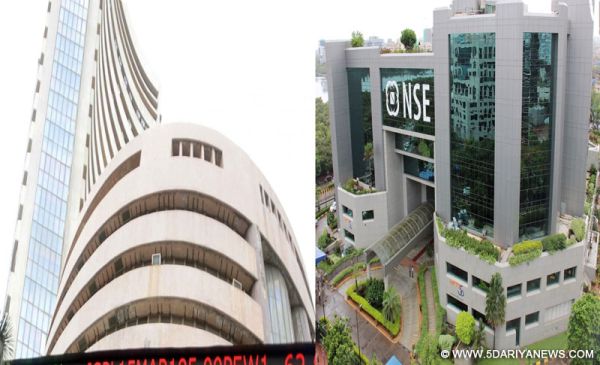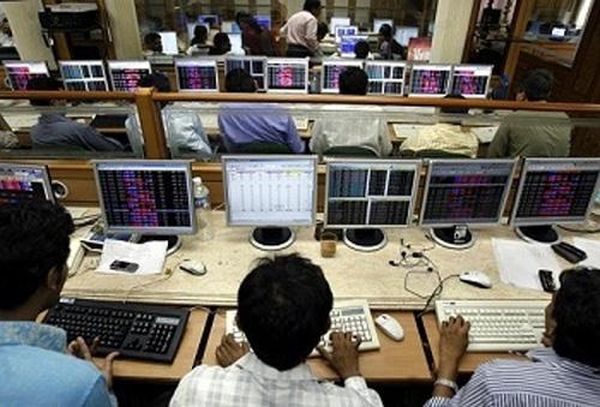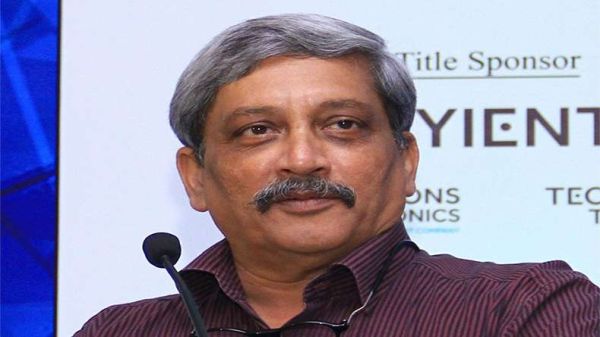
by admin | May 25, 2021 | Opinions
 By Taponeel Mukherjee,
By Taponeel Mukherjee,
Innovation in the Indian capital markets is needed to both boost growth and resolve the balance sheet issues of banks. Besides improving the corporate bond market and lending standards, work needs to be done to create a covered bond market to assist better lending standards.
Covered bonds are bonds backed by both a pool of assets and by recourse to the borrower – providing dual recourse for the lender. Covered bonds have been a tool for credit across the world for centuries, and the outstanding amount in Europe, according to the 12th edition of the European Covered Bond Fact Book, was 2.5 trillion euros at the end of 2016. India needs to establish a covered bond market to provide a useful additional tool for credit flow in the economy.
Given its dual recourse feature, the covered bond market encourages more risk-averse investors such as pension funds and insurance companies, with large pools of capital, to participate in the market. Having dual recourse also allows investors to lend for a longer duration and at a lower interest rate. This helps bring down the cost of credit and allows institutions issuing covered bonds to match asset liability for longer periods of time.
For instance, if a financial institution makes housing loans for a 10-year period, access to a covered bond market will allow it to borrow for longer as opposed to the short-dated bank deposits on its balance sheet. This is particularly applicable to the India, since most banks fund long-dated assets using short-dated liabilities such as fixed deposits. This creates refinancing risk for banks, causing instability in the financial system. A well-developed covered bond market helps create a more stable financial system.
India faces some challenges in the credit markets, and innovation is the key to improving lending standards. To start with, the covered bond market must be applicable only to a few sectors that need a push. Housing can be one, since the lower cost of credit can make the sector a lot more affordable in India. It is important to start with one sector, or a few sectors at most, to help develop the covered bond market.
There are three important points to be kept in mind to ensure the success of a covered bond market. Firstly, the demarcation of assets in the asset pool must be carefully defined legally and executed operationally. India needs to create an independent central agency that will monitor the segregation of the assets in the pool. It will be tasked with ensuring that assets in the pool are not used as collateral for any other purpose.
Secondly, the agency will have to ensure that the pool of assets maintains its value and assets are added or removed from the pool by the borrower when required to maintain the agreed asset value. There can be no two ways about this condition.
Thirdly, strict limits must be ensured in terms of how much a particular financial institution can issue as covered bonds as a percentage of its balance sheet. This will ensure that not all assets of a financial institution are encumbered through a covered bond pool.
In summary, it is important for India to learn from how the covered bond market developed in Europe and helped in developing a robust credit system. Without doubt, a covered bond market is one of many different solutions that must be used to create a more robust capital market in the country. That said, a successful covered bond market is contingent upon a well-defined legal framework and its effective implementation.
(Taponeel Mukherjee heads Development Tracks, an infrastructure advisory firm. He can be contacted at taponeel.mukherjee@development-tracks.com or @taponeel on Twitter)
—IANS

by admin | May 25, 2021 | Economy, Markets, News
 By Porisma P. Gogoi,
By Porisma P. Gogoi,
Mumbai : Apart from developments on the domestic front, the Indian equity markets would seek direction from global markets during the coming week, said market analysts.
“With the results season almost over, all the focus will continue to remain on the global cues,” Arpit Jain, AVP at Arihant Capital Markets, told IANS.
“Last week, the Dow Jones increased by 4.5 per cent and recovered 50 per cent of its recent losses. Hence, once the domestic concerns settle, Indian indices are likely to take part in global rally,” he added.
In addition to global cues, the movement of funds and crude oil prices are expected to influence the market sentiment next week.
“It is expected that volatility of global stock markets, along with rupee-dollar movement, inflow of funds from both foreign and domestic market participants and crude oil prices are expected to influence the domestic market going forward,” D. K. Aggarwal, Chairman and Managing Director of SMC Investments and Advisors, told IANS.
Last week, the rupee strengthened by 18-19 paise to close at 64.21-22 against the US dollar.
Provisional figures from the stock exchanges showed that foreign institutional investors remained net sellers last week and sold off scrips worth Rs 2,849.1 crore.
However, domestic institutional investors purchased scrips worth Rs 2,368.01 crore.
With various developments taking place in the banking sector of the country, analysts were of the view that the NSE Nifty50 could be further dragged lower by the Bank Nifty index — which has a greater weightage — the following week.
“What we saw during the past week was a ‘time-wise’ correction. Next week, we will be proceeding towards the next leg of correction and may see markets drifting lower,” said Sacchitanand Uttekar, Assistant Vice-President, Research at Tradebulls.
According to Uttekar, banks were leading the downward rally because of domestic cues like the $1.8 billion Punjab National Bank (PNB) fraud and the state-run banks drifting lower.
“Since the last two sessions, the scenario has changed with the private banks also taking a hit. The Bank Nifty index was dragging the Nifty50 lower,” Uttekar told IANS.
A massive sell-off in the banking sector stocks was triggered last week after the Reserve Bank of India (RBI) announced new norms to deal with non-performing assets.
Besides, the multi-crore fraud detected at one of the Mumbai branches of PNB led to a drastic decline in the shares of the company, along with the PSU Bank Nifty index.
“Going forward, banks could see much deeper levels and magnitude of the fall could be higher for the Bank Nifty,” Uttekar added.
On technical levels, Deepak Jasani, Head, Retail Research, HDFC Securities, said: “With the Nifty continuing to correct the past week after breaking a trend line support a few weeks back, the underlying short-term trend remains down.”
“Further downsides are likely early next week once the immediate support of 10,434 is broken. Any pull-back rallies could find resistance at 10,618,” Jasani told IANS.
Last week, trade in the Indian equity markets was almost flat with a slew of domestic developments like the PNB fraud impacting the market mood.
On a weekly basis, the barometer 30-scrip Sensitive Index (Sensex) rose a tad by 5 points or 0.01 per cent to close at 34,010.76 points. The wider Nifty50 of the National Stock Exchange closed a bit lower by 2.65 points or 0.02 per cent at 10,452.30 points.
(Porisma P. Gogoi can be contacted at porisma.g@ians.in )
—IANS

by admin | May 25, 2021 | Corporate, Corporate finance, Corporate Governance, Economy, Finance, News, Politics

Karnataka Chief Minister Siddaramaiah arrives at Vidhana Soudha to present the state budget in Bengaluru on Friday. (PTI)
Bengaluru : With an eye on Assembly election, due in late April or early May, Karnataka Chief Minister Siddaramaiah on Friday presented a popular state budget for fiscal 2018-19 to please all sections of society.
Barring 8 per cent increase in additional excise duty on Indian-made liquor, the budget spared the people from fresh taxes despite Rs 151.30 crore deficit on capital account (revised estimates) on steep hike in borrowings.
Delivering his 13th budget, sixth in a row as Chief Minister, by virtue of holding the finance portfolio, 70-year-old Siddaramaiah told the lawmakers in the Assembly that his government posted Rs 383.84 revenue surplus (revised estimates) as against Rs 136.54 crore budget estimates for fiscal 2017-18.
“For new fiscal (2018-19), revenue surplus is estimated to be Rs127.28 crore, while deficit on capital account is expected to be Rs 383.25 crore due to higher institutional borrowings and repayment of loans,” he pointed out.
Projecting Rs 1,03,444 crore tax revenue, including GST (Goods and Services Tax) compensation from the Central government for FY 2019, an increase of 12.78 per cent over the revised estimates of FY 2018, the Chief Minister said the non-tax revenue would be Rs 8,163 crore.
“We expect to receive Rs 36,215 crore from central taxes and Rs 14,942 crore as central grants. The revenue receipts will be supplemented by Rs 39,3128 crore as borrowings, Rs 75 crore non-debt capital receipts and Rs 129 crore from recovery of loans,” noted Siddaramaiah.
The budget expects state-run boards, civic corporations and local bodies to mobilise Rs 16,760 crore through internal resource generation and borrowings during the upcoming fiscal.
Among the new schemes, the budget has envisaged to strengthen the software of the IT network to make the police system citizen friendly across the state.
“The number of women in the state police department will be enhanced 25 per cent over the next years and all the women police stations in the district will be upgraded as one-stop service centres,” added the Chief Minister.
—IANS

by admin | May 25, 2021 | Economy, News, Politics

Manohar Parrikar
Panaji : Even as Goa readies for closure of its iron ore mines next month, following a Supreme Court order, Chief Minister Manohar Parrikar on Wednesday said it is not possible for governments to suddenly disrupt the economic trajectory of a state and all stakeholders, including the judiciary, will have to take that into consideration vis-a-vis decision-making.
“Without going into the merits of the judgement,… Goa is facing economic problems — is a fact,” the Chief Minister said.
“Now all stakeholders, including the judiciary will have to take into consideration economic trajectory. It is not possible for governments to suddenly disrupt the economic trajectory,” Parrikar told reporters.
His comment came as Goa readied for closure of its 88 iron ore mines in March following the cancellation of their leases by the Supreme Court on February 7.
Cancelling the leases of all existing iron ore mines in Goa the apex court ordered that the mining tracts should be leased afresh to new licencees after obtaining new environmental clearances.
Addressing a press conference after meeting with a cross-section of legislators, Parrikar also said that a final decision on the resumption of mining and mode of leasing of the mines will be taken in 15-20 days.
The Chief Minister, however, said that the economic impact of the closure would not be as much as it was in 2012, when iron ore export was at its peak.
“The revenue from last year (from mining sector) will not exceed Rs 300 crore (in direct revenue), indirect (revenue) maybe around Rs 50 to Rs 100 crore. So Rs 300 crore in a total net budgetary size of Rs 10,000 crore. Financially it is three to four per cent,” Parrikar said.
The country’s leading exporter of low-grade iron ore, Goa, exported nearly 50 million tonnes before the Shah Commission in 2012 exposed a Rs 35,000 crore scam, triggering a ban on mining in the state.
The top court in February cancelled all those leases that were again renewed for 20 years from 2007.
Observing that all these leases were renewed “hastily” and were “illegal”, the top court ordered that all ore extraction activity on the renewed leases should cease by March 15.
The Chief Minister also chided the media for indulging in speculations.
“Once we have a policy (on mining) we will tell you. Until then you keep speculating. It is a good business for you to go on speculating. We have not taken any decision… It will be finalised after discussion. I will take 15-20 days…” Parrikar said.
—IANS

by admin | May 25, 2021 | Opinions
 By Taponeel Mukherjee,
By Taponeel Mukherjee,
Current global macro-economic news has two key trends that stand out: Monetary policy tightening and fiscal policy expansion. Hawkish commentary by global central banks regarding rate hikes and balance sheet reduction has started to hit the newswires with regularity. On the fiscal policy side, tax cuts in the US have made news.
Regardless of the result, the main takeaway is that as monetary policy becomes tighter, fiscal policy might be used to boost consumption. India needs to ensure that investment opportunities in the country remain attractive — relative to global opportunities.
Central bank meetings globally, from the US Federal Reserve to the Bank of England, have admitted to tight labour markets, wage pressure to the upside and inflationary concerns. As rate hikes and balance sheet reductions are priced in, liquidity will be withdrawn from the system. Not only will this lead to asset price volatility, but the market will pay a lot more attention to the quality of assets.
When money supply gets reduced, assets globally will have to compete that much harder to attract capital. India needs to ensure that its assets remain competitive at a global level on a relative basis even as global central bank balance sheets shrink.
The US tax cuts have been a hotly debated topic. Regardless of the long-term ramifications for the economy and for the government debt-to-GDP ratio, the fact of the matter is that corporate tax rates today are extremely competitive in the US compared to other countries.
Germany just reported a public finance surplus for the year 2017, prompting debate around tax cuts to pass on some of the government surplus to the consumer. As countries globally adopt and explore expansionary fiscal policy, it is important for Indian policymakers to ensure that investment opportunities remain attractive at a global level, and the country remains an attractive destination for foreign capital, especially with a view to bridging the infrastructure gap.
India has certain fundamental advantages that stand out. It has an infrastructure deficit and a growing economy that can use newly-created infrastructure. Hence there is natural demand for an asset in a large economy such as India. Essentially, India has both the need and the required market size to deploy large pools of global capital. But given the “competition” for the global capital pool, the country needs to build on the fundamental strengths to attract the necessary capital.
Any investment at a basic level has a “financial” attractiveness and a “regulatory” attractiveness. As global yields head higher and tax breaks kick in, Indian assets will have to compete even harder on the “financial” aspect. However, this is the time to push ahead with changes that can help boost the “regulatory” attractiveness of Indian assets.
While the bankruptcy resolution mechanism under the Insolvency and Bankruptcy Code (IBC) has been a step in the right direction, greater clarity is needed around Public Private Partnership (PPP) agreements and irrevocability of offtake agreements such as Power Purchase Agreements (PPAs) is essential to provide Indian infrastructure investments a regulatory boost.
PPPs have been used to deliver valuable projects in India, but in many instances they have been mired in problems. We think clarity at the beginning and a more detailed analysis and allocation of risk is essential to ensure that PPPs are successful. The PPP model needs attention because a large part of much-needed infrastructure will have to come through this route. Irrevocability of offtake agreements from infrastructure projects is non-negotiable.
For investors to have faith in the contract to make capital-intensive, long-dated investments, offtake agreements such as PPAs must be respected and honoured. “Bankability” of infrastructure projects can only go up when global investors have greater faith in contract enforceability in the country.
It is thus important for policymakers and the industry in India to be cognizant of global changes and macro-economic moves. Nations always have, and will rightly continue to, compete for much needed capital. India is a compelling investment opportunity, but must build on its inherent strengths to attract the best of global capital.
(Taponeel Mukherjee heads Development Tracks, an infrastructure advisory firm. Views are personal. He can be contacted at taponeel.mukherjee@development-tracks.com or @Taponeel on Twitter)
—IANS





